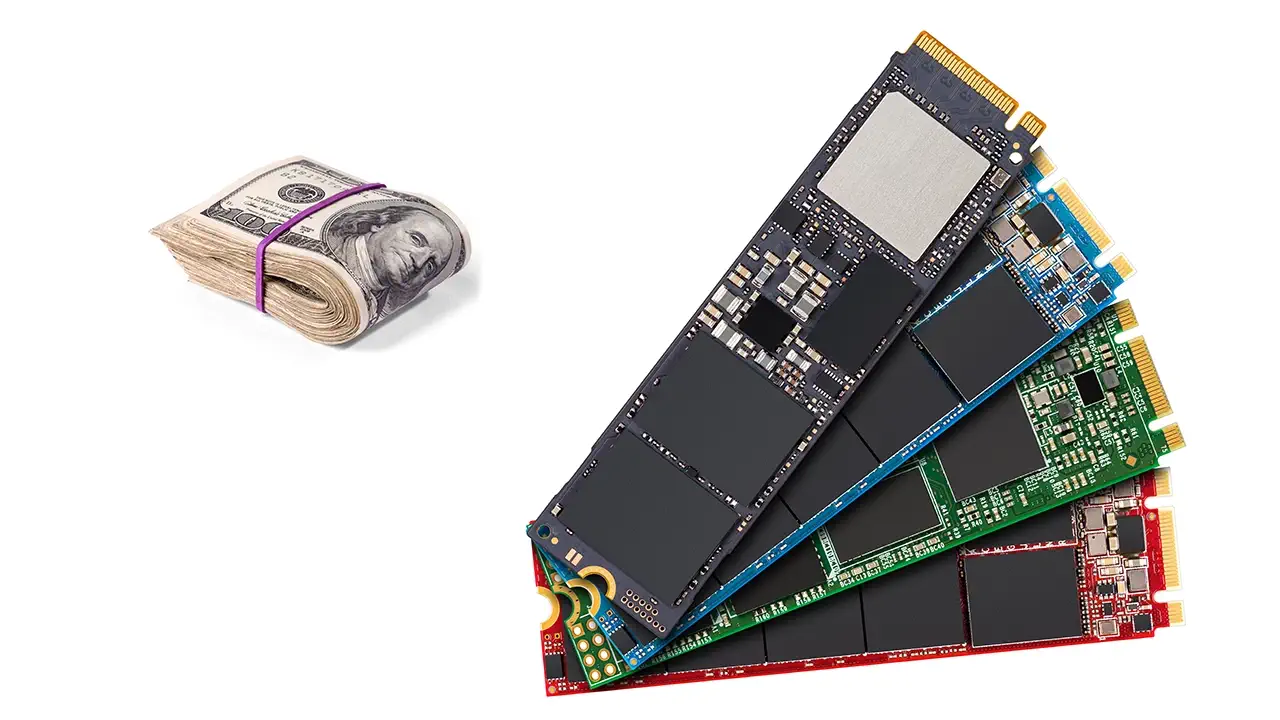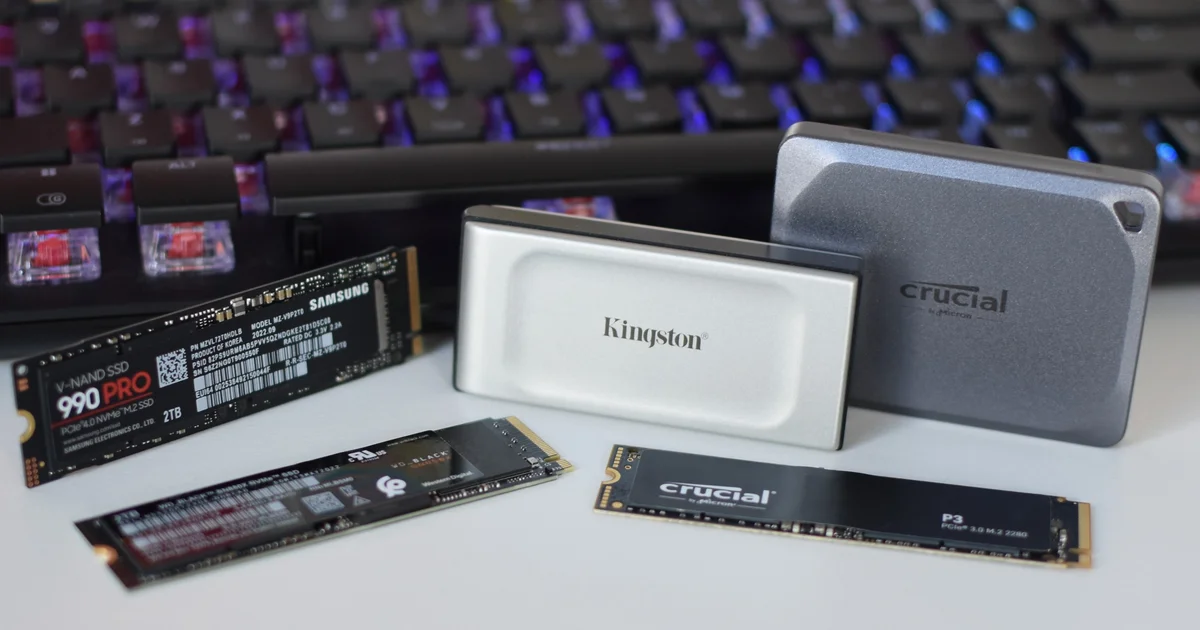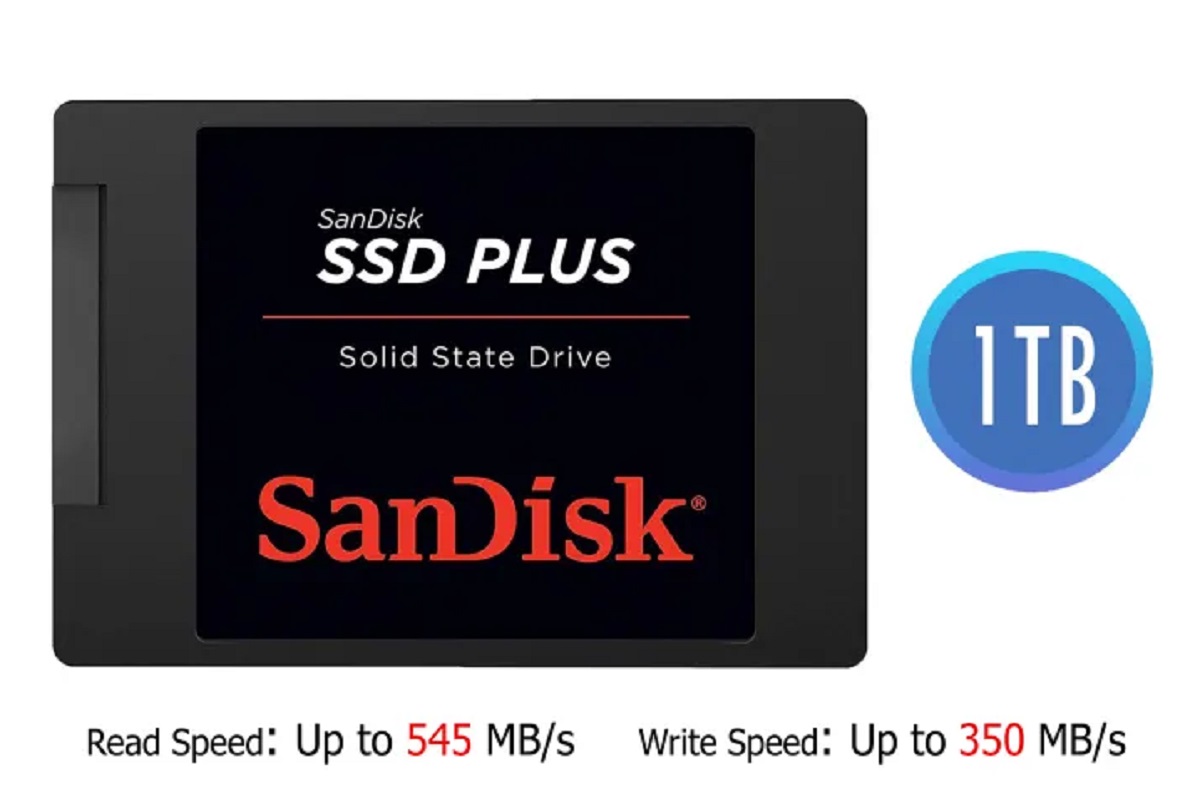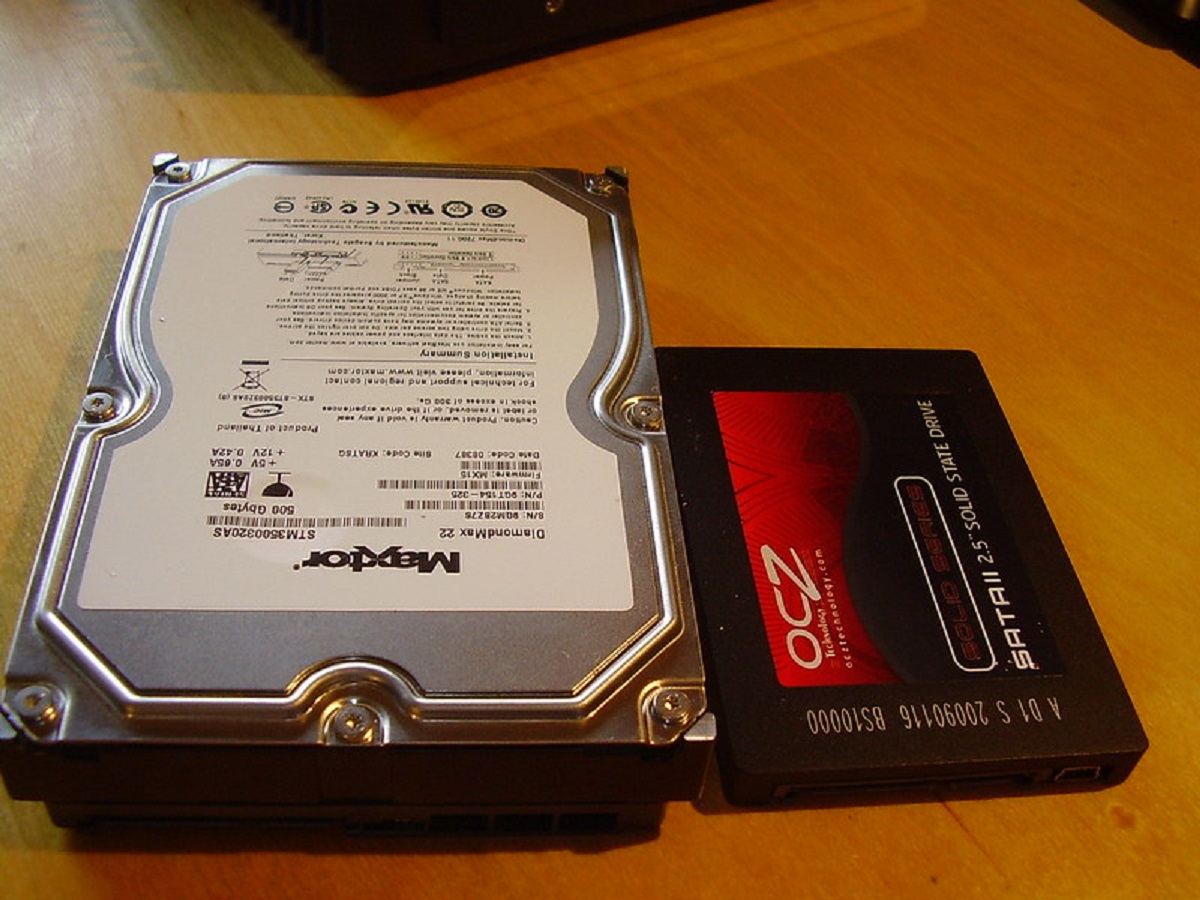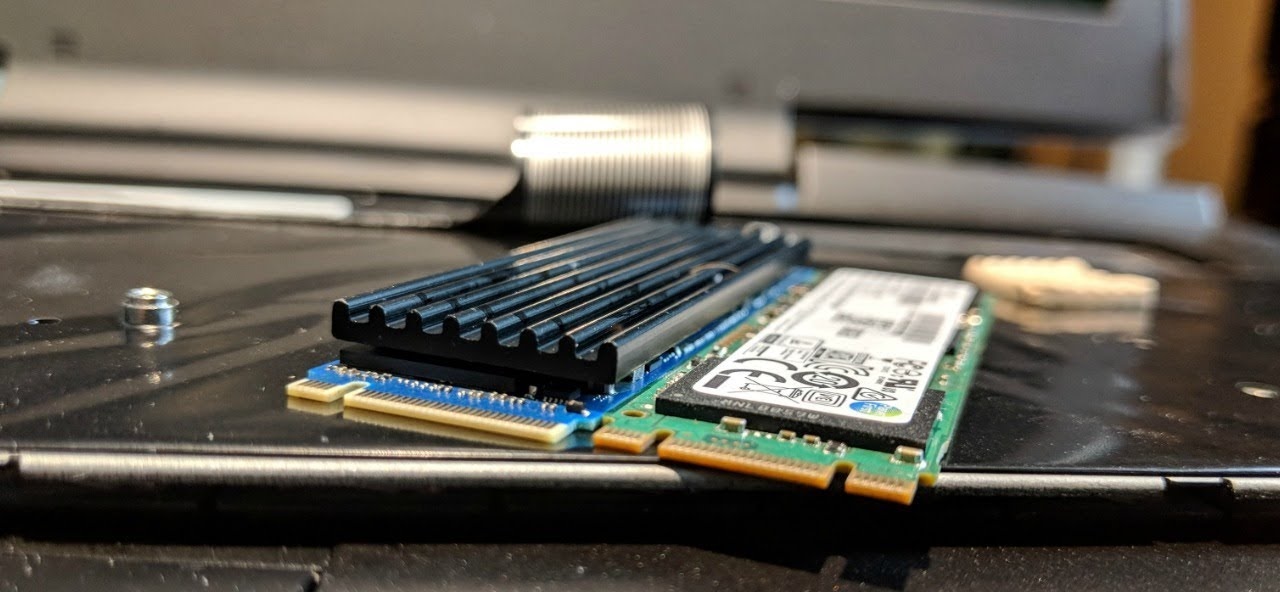Introduction
Welcome to the world of solid-state drives (SSDs), a revolutionary storage technology that offers faster speeds, improved performance, and enhanced reliability compared to traditional hard disk drives (HDDs). As computer systems continue to evolve, SSDs have become increasingly popular for their ability to store and retrieve data quickly, making them a preferred choice for many users.
However, one question that plagues consumers and tech enthusiasts alike is why SSDs are often more expensive than their HDD counterparts. In this article, we will delve into the factors that contribute to the higher cost of SSDs and explore the intricacies of their manufacturing process. By understanding these factors, you will gain insight into why SSDs command a premium price in the market.
Before we dive into the details, it’s important to grasp the basic differences between SSDs and HDDs. SSDs use flash memory technology, which relies on electronically-based storage cells to store data. In contrast, HDDs use spinning disks or platters with magnetic coatings, along with read/write heads, to store and retrieve data. This fundamental distinction in technology plays a significant role in the pricing disparity between the two types of storage devices.
So, why exactly are SSDs pricier? To unravel this mystery, we must consider several key factors that contribute to the higher cost of SSDs. These factors include the cost of flash memory itself, the complexity of the manufacturing process, research and development expenses, the impact of supply and demand dynamics, technological advancements, and the operational costs associated with producing SSDs.
SSD vs HDD: The Basics
Before we delve into the reasons behind the higher cost of SSDs, let’s briefly compare SSDs and HDDs to better understand their fundamental differences. This will help provide context for why SSDs tend to carry a higher price tag.
Firstly, SSDs, or solid-state drives, utilize flash memory technology to store data. This means that information is stored on microchips, similar to the ones found in USB drives or memory cards. On the other hand, HDDs, or hard disk drives, rely on magnetically-coated rotating disks called platters, along with read/write heads, to store and access data.
One of the biggest advantages of SSDs over HDDs is speed. SSDs can access and retrieve data much faster, as there are no moving parts involved. This translates to quicker boot times, faster application launches, and improved overall system performance.
Furthermore, SSDs offer enhanced durability and reliability compared to HDDs. Since there are no mechanical components that can fail, the risk of data loss due to physical damage is significantly reduced with SSDs. This is especially important in scenarios where the device may be subject to movement or physical stress, such as laptops or portable external drives.
Another key difference between SSDs and HDDs is size and form factor. SSDs are typically lighter and more compact, making them suitable for slim devices like ultrabooks or tablets. HDDs, on the other hand, are larger and bulkier due to the need for spinning disks.
While SSDs offer numerous advantages over HDDs, they do come at a higher price. This cost differential arises from various factors in the production and manufacturing process of SSDs, which we will explore in the following sections.
The Cost of Flash Memory
One of the primary factors contributing to the higher cost of solid-state drives (SSDs) is the cost of flash memory, which serves as the storage medium for these devices. Flash memory is a type of non-volatile memory that retains data even when there is no power supply. As a result, it allows for faster data retrieval and helps drive the superior performance of SSDs.
Flash memory is composed of tiny cells that can store electrical charges to represent data. These cells are organized into pages, and multiple pages form blocks. To store or retrieve data, the SSD’s controller manages the process of sending electrical charges to the correct cells within the flash memory. This intricate design and architecture, along with the need for advanced manufacturing techniques, contribute to the higher cost of flash memory.
Additionally, the cost of flash memory can vary based on its quality and performance. Higher-quality flash memory with better endurance and longer lifespan tends to be more expensive. This is particularly relevant when considering enterprise-grade SSDs, which need to meet stringent durability and reliability requirements for intensive use in data centers.
Another important factor driving the cost of flash memory is the constant demand for higher capacity. As technology evolves, the demand for larger storage capacities in SSDs increases. However, increasing the capacity of flash memory requires complex engineering and production processes, which can significantly impact the cost per unit of storage.
Moreover, costs associated with the development and improvement of flash memory technology, such as research and development expenses, further contribute to the higher price of SSDs. Manufacturers invest substantial resources into enhancing the performance, endurance, and density of flash memory, which ultimately reflects in the market price of SSDs.
It’s worth noting that as technology advances and economies of scale come into play, the cost of flash memory gradually decreases over time. This allows SSD manufacturers to offer higher capacity drives at more affordable prices. However, it’s important to consider that the constant drive for innovation and the progression towards more advanced flash memory technologies can also offset some of these cost reductions.
Overall, the cost of flash memory remains a significant factor in the pricing of SSDs. The intricate design and manufacturing processes involved, the demand for higher capacity, and the expenses associated with research and development all contribute to the higher price tag of SSDs compared to traditional hard disk drives (HDDs).
Manufacturing Complexity
When it comes to comparing the cost of solid-state drives (SSDs) and traditional hard disk drives (HDDs), manufacturing complexity plays a significant role. The intricate design and intricate production processes involved in manufacturing SSDs contribute to their higher price tag.
Unlike HDDs that consist of mechanical components, such as rotating platters and read/write heads, SSDs are entirely electronic devices. The process of manufacturing SSDs involves intricate circuitry, advanced chip technology, and precise assembly techniques.
One of the key components of SSD manufacturing is the flash memory chips themselves. These chips are typically produced using semiconductor fabrication techniques, which require a clean and controlled environment. The process involves depositing multiple layers of materials onto a silicon wafer and photolithography techniques to create the intricate circuitry patterns.
Further, the manufacturing process includes testing and quality control measures to ensure that the SSDs meet the required performance and reliability standards. This includes rigorous testing for data integrity, endurance, and performance consistency.
Another factor that adds to the complexity of SSD manufacturing is the integration of advanced controller technology. The controller is responsible for managing the flow of data, ensuring correct addressing of the storage cells in the flash memory, and implementing algorithms for wear-leveling and error correction. The design and development of these controllers require specialized skills and expertise.
Additionally, the assembly and packaging process for SSDs can be more intricate compared to HDDs. Due to their smaller form factor and delicate electronic components, SSD manufacturing requires precise handling and assembly techniques to avoid any damage or degradation of performance.
All these intricate processes and complex manufacturing techniques contribute to the higher cost of producing SSDs. The specialized equipment, cleanroom facilities, skilled labor, and research and development efforts needed for the intricate manufacturing process are reflected in the final price of SSDs.
It’s important to note that as technology advances and the manufacturing processes for SSDs become more streamlined, the manufacturing complexity and associated costs may gradually decrease. However, at the current state of technology, the manufacturing complexity involved in producing SSDs remains a significant contributor to their higher price compared to HDDs.
Research and Development Costs
When considering the higher cost of solid-state drives (SSDs) compared to traditional hard disk drives (HDDs), we cannot overlook the significant investment in research and development (R&D) that goes into the development of SSD technology. R&D costs contribute to the overall price of SSDs and are a crucial factor in understanding their higher price tag.
SSDs are a relatively new technology, and their development has required substantial investment in R&D efforts. Manufacturers invest heavily in exploring and advancing the underlying technologies used in SSDs, such as flash memory, controller chips, and firmware.
The goal of R&D is to enhance the performance, reliability, and capacity of SSDs. This involves continuous research and experimentation to develop new materials, fabrication techniques, and algorithms that optimize data storage, retrieval, and error correction mechanisms.
Furthermore, manufacturers must also invest in testing and validation processes during the R&D phase to ensure that the SSDs meet the required industry standards and consumer expectations. These tests may include durability testing, performance benchmarking, and compatibility checks with various hardware configurations.
The cost of R&D is influenced by multiple factors, such as the complexity of the technology, the competition in the market, and the pace of innovation. SSD manufacturers need to recoup their significant R&D investments by incorporating them into the final price of their products.
It is worth noting that R&D costs are not limited to the initial development of SSDs. As technology evolves and new advancements are made, manufacturers continue to invest in ongoing R&D efforts to improve SSD performance, endurance, and overall reliability.
While R&D expenses contribute to the higher cost of SSDs, they also drive innovation, allowing for the continuous improvement of these storage devices. As technology advances and R&D efforts bear fruit, we can expect to see SSDs become more affordable and offer even better performance in the future.
The Impact of Demand and Supply
Understanding the impact of demand and supply dynamics is essential when considering the pricing of solid-state drives (SSDs). The demand for SSDs has been steadily increasing due to their superior performance and reliability compared to traditional hard disk drives (HDDs). However, factors such as supply limitations and market demand greatly influence the pricing of SSDs.
The growing demand for SSDs has been fueled by various factors, including the increasing use of high-performance computing, the rise of data-intensive applications, and the need for faster storage solutions. As a result, there has been a surge in SSD adoption in both consumer and enterprise markets.
On the supply side, the production and manufacturing of SSDs face limitations. The complex manufacturing process, the need for specialized equipment and skilled labor, and the availability of components such as flash memory and controllers impact the overall supply of SSDs in the market.
When demand surpasses supply, it creates a situation of scarcity, which often leads to higher prices. Manufacturers need to balance supply and demand and ensure that they can meet the market’s requirements while sustaining their operations and investments.
Additionally, supply and demand dynamics can be influenced by external factors, such as market competition and industry trends. As more manufacturers enter the SSD market and competition intensifies, prices may become more competitive. However, it’s important to note that manufacturers still need to factor in their production costs and maintain profitability.
Moreover, the availability and price of key components, such as flash memory, can also impact the pricing of SSDs. Fluctuations in the supply and cost of flash memory, which depend on factors like global demand and advancements in technology, can affect the overall affordability of SSDs.
Overall, SSD pricing is influenced by the delicate balancing act between supply and demand. As the demand for SSDs continues to rise, manufacturers must navigate the challenges of meeting market demand while maintaining a financially viable operation. Understanding these supply and demand dynamics helps shed light on why SSDs may carry a higher price compared to HDDs.
Technology Advancements
One of the key factors that contribute to the higher cost of solid-state drives (SSDs) is the continuous advancement in technology. As technology evolves, SSDs become more sophisticated, offering improved performance, higher capacities, and enhanced reliability. However, these advancements in technology come with their own costs that impact the pricing of SSDs.
One significant area of technological advancement in SSDs is the development of more efficient and higher-density flash memory cells. As manufacturers strive to deliver higher capacities in smaller form factors, they invest in research and development to innovate new flash memory technologies. This involves designing memory cells that can store more data, improving performance, and ensuring longer endurance.
With the demand for greater capacity, SSD manufacturers focus on increasing the density of flash memory and reducing the size of individual memory cells. However, pushing these technological limits is a complex and costly process. The development of advanced flash memory architectures requires substantial research, testing, and investment in new production processes, all of which contribute to the higher cost of SSDs.
Additionally, advancements in controller technology play a crucial role in enhancing SSD performance and managing the intricate operations involved in storing and retrieving data from flash memory. Manufacturers invest in developing advanced controllers with features like error correction, wear-leveling algorithms, and enhanced data transfer speeds. These technological advancements in controllers result in higher costs, which are reflected in the pricing of SSDs.
Furthermore, as technology evolves, new manufacturing techniques and machinery become necessary to produce more advanced SSDs. Updating manufacturing facilities and making use of state-of-the-art equipment incurs additional expenses for manufacturers. These costs are passed down to consumers when purchasing SSDs.
However, it’s important to note that as technology progresses and economies of scale come into play, the cost of these technological advancements gradually decreases over time. This allows manufacturers to offer more advanced and affordable SSDs to consumers. The continuous technological breakthroughs in SSDs not only improve performance but also create opportunities for cost reduction and enhanced value for consumers.
In summary, technology advancements in the development of flash memory, controller technology, and manufacturing processes contribute to the higher cost of SSDs. These advancements require extensive research, investment, and specialized equipment. However, the continuous progress in technology ultimately leads to improved performance and affordability in SSDs.
Operational Costs
Operational costs play a significant role in determining the pricing of solid-state drives (SSDs). The production and distribution of SSDs involve various expenses that contribute to the higher price of these storage devices compared to traditional hard disk drives (HDDs).
Manufacturing SSDs requires specialized facilities, equipment, and skilled labor. The cost of setting up and maintaining cleanrooms, which provide a controlled environment free from dust and contaminants, adds to the operational expenses. Cleanrooms are crucial for ensuring the quality and integrity of the components used in SSDs.
Moreover, the advanced machinery and production processes involved in manufacturing SSDs demand skilled technicians and engineers who can operate and maintain the equipment. This skilled labor comes at a cost and is reflected in the overall price of SSDs.
Quality control and testing are other essential aspects of the operational costs associated with SSDs. Manufacturers conduct rigorous testing to ensure that each SSD meets the required standards for performance, endurance, and reliability. Extensive testing measures, both during production and before shipment, help identify and discard any defective units, which increases the operational costs but ensures high-quality products for consumers.
Storage and transportation costs are additional factors that contribute to the overall operational expenses of SSDs. SSDs need to be stored in secure and controlled environments to maintain their integrity before distribution. Also, the transportation of these delicate devices requires careful handling and appropriate packaging to minimize the risk of damage during transit.
Furthermore, marketing and distribution expenses impact the final price of SSDs. Manufacturers allocate resources to advertising campaigns, packaging design, and distribution channels to promote and distribute their products. These costs, along with profit margins, are factored into the retail price of SSDs.
It’s important to consider that operational costs can vary across different manufacturers and even across different SSD models within the same brand. Each company has its own strategies, investments, and operational efficiency practices that influence the overall cost structure and pricing of their SSDs.
While operational costs contribute to the higher price of SSDs, they are necessary for ensuring product quality, reliability, and customer satisfaction. The investment in maintaining high operational standards ultimately adds value to the SSDs and justifies the premium price compared to HDDs.
Final Thoughts
It’s important to acknowledge that the higher cost of solid-state drives (SSDs) compared to traditional hard disk drives (HDDs) is influenced by various factors. Understanding these factors helps explain why SSDs carry a premium price tag:
The cost of flash memory: Flash memory, the storage medium used in SSDs, is more expensive than magnetic platters used in HDDs. The intricate manufacturing processes, research and development costs, and the demand for higher capacity all contribute to the higher cost of flash memory.
Manufacturing complexity: The production of SSDs involves intricate electronic circuitry, advanced chip technology, and precise assembly techniques. The complexity of manufacturing SSDs requires specialized facilities, advanced equipment, skilled labor, and rigorous quality control measures.
Research and Development costs: The continuous innovation and advancement of SSD technology necessitate significant investment in research and development. Manufacturers invest in improving performance, endurance, and capacity, which contributes to the overall cost of SSDs.
The impact of demand and supply: The increasing demand for SSDs, coupled with supply limitations, can create a situation of scarcity and result in higher prices. Market competition, industry trends, and the availability and cost of key components also influence the pricing of SSDs.
Technology advancements: The continuous progress in technology drives the development of more efficient and higher-capacity flash memory, advanced controller technology, and improved manufacturing techniques. These advancements come with their own costs but ultimately result in better performance and affordability of SSDs over time.
Operational costs: The production, testing, quality control, storage, transportation, marketing, and distribution of SSDs all incur expenses that impact the final price. These operational costs help ensure product quality, reliability, and customer satisfaction.
While SSDs are generally more expensive than HDDs, it’s important to consider the significant advantages they offer, such as faster speeds, improved performance, enhanced durability, and smaller form factors. The advancements in SSD technology, coupled with economies of scale and market competition, are gradually making these storage devices more accessible and cost-effective.
In today’s data-driven world, where speed, reliability, and performance are paramount, the higher cost of SSDs can be seen as a worthwhile investment. As technology continues to evolve and manufacturing processes become more efficient, we can expect to see further improvements and cost reductions in SSDs, making them an increasingly popular and affordable choice for consumers and businesses alike.







